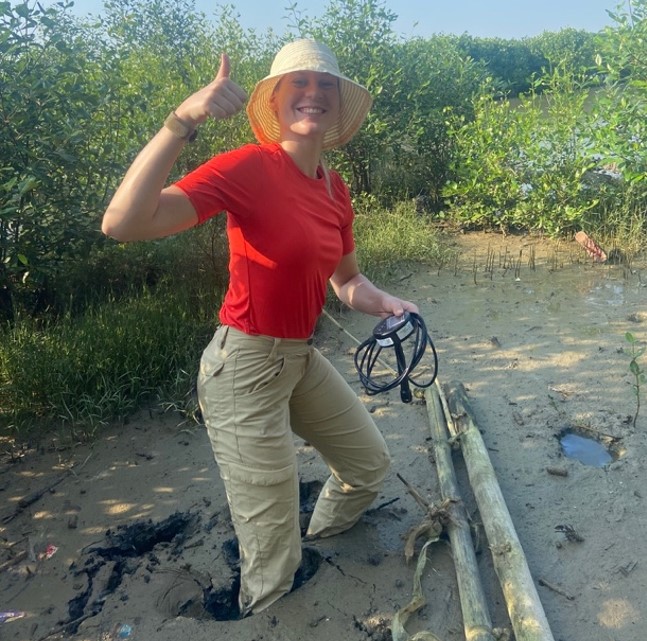Wageningen University & Research
For my Master Thesis I went to Semarang to study the effects of flooding events on the Avicennia mangrove species in the Demak Regency (Timbulsloko). Seawater with a high salinity (30 ppt) flows further into the estuaries and rivers, which causes salinity concentrations in aquifers, aquaculture ponds and in ground water. Pneumatophores act as mechanical barrier and reduce the speed of the waves coming from storm surges during rain season (November till March) or during spring tides (mostly occurring in May-June). Therefore, the need of maintaining and rebuilding these mangroves are crucial for coastal protection. Mangroves are the most important plant species in this area to protect the coastal villages around Timbulsloko. I mainly found two Avicennia species in the area; Avicennia marina and Avicennia alba. These species are recognizable by their aerial roots which grow above the sediment to catch extra oxygen from the air. This happens when the soil conditions are anoxic. My hypothesis is that salinity and sediment type is also a stimulating factor for pneumatophore growth. Results showed that salinity of the surface water did have a significant effect on the pneumatophore growth of the mangroves. The other variables didn’t seem to have an effect on the pneumatophores. This could be due to the big differences in sites and trees during the sampling and the wide variance of the data.
In short during this field research I gained a lot of knowledge about mangroves and the species differences, which I can take with me in the future.

